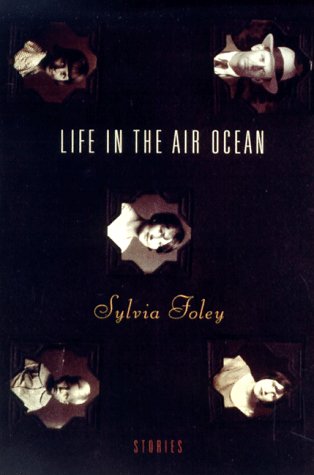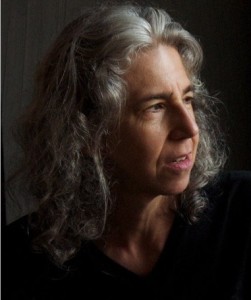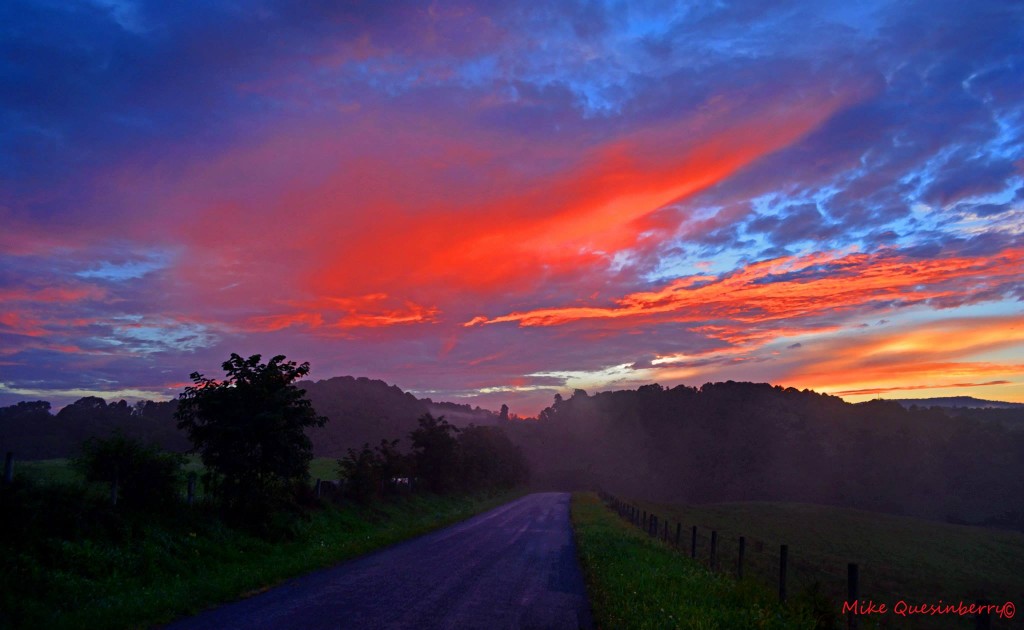Mary Akers: Thanks for letting us have Elemenopy, Sylvia. It’s such a strong, haunting story and it grabbed us all very quickly here. Speaking of “haunting” work, what makes a work haunting for you as a reader and/or as a writer?
Sylvia Foley: Thanks for the kind words! For me, work that haunts me is indelible, deeply evocative, often revelatory. It speaks with longing, and shivers with unexpected and profound truths. It might even deliver the impossible—a nanosecond of knowing what it’s like inside another skin. The language itself might come alive, a third entity flowing through the voices of writer and characters. The best work changes me, changes what I thought I knew.
MA: Yes. It changes us both as readers and as writers–a fact I think non-writers might find surprising. Are there writers whose work you find haunting? If so, could you name a few?
SF: Sure, though I’m a little loathe to answer because there are so many, and how to choose? That said—Anthony Doerr (his story collection Memory Wall is superb), Marilynne Robinson, Alice McDermott, Flannery O’Connor, Virginia Woolf. Melville and Dostoevsky have haunted me since middle childhood.
MA: You and I met at VCCA last year, where I first heard you read from your wonderful work. For our reader who may not know, VCCA is an artist’s community where one can be awarded “a gift of time and space” to work on various creative endeavors. I’ve been there with playwrights and composers, painters and poets, sculptors and directors, and just about every creative profession in between. Do you find that atmosphere to be nurturing for your creativity? What “gift” do you get most from an artist’s residency?
SF: A residency is both oasis and wanderground. For me, it provides two main gifts: the unprecedented freedom and time to make whatever I want; and the chance to be with “my” tribe. In my regular life I have to fight for every minute of writing time, and there is so much racket in the head. At VCCA I felt the noise fall away; in short order I was returned to myself as both human and writer, and the rivers of days and words flowed as they would. One can’t ask for anything better. And the sparking energy that comes from living and working in a community of artists, a place suffused with spirited curiosity and devotion to making, is something I’ve found nowhere else.
MA: It was a transformative place for me, too. In a semi-related question–what do you think of pairing art forms as we do in r.kv.r.y.? I know we had to revisit several images to find one that worked for Elemenopy. Some people don’t care for the interplay of forms…or at least find the process of pairing work a difficult one. Do you feel that one genre of art informs the other?
SF: Sometimes I like pairings of different forms, sometimes I don’t. I’m the sort of person who quickly gets overloaded with too much sensory input or information. As a writer I generally prefer the spare to the ornate. And paired with text, a literal image can feel invasive or reductive; abstract images can feel remote. But I think with a good pairing, a cross-pollinated third “work” might emerge, and that can be wonderful. I love the image you found for Elemenopy—its saturated colors, that blood-red lit-up sky over a bruised road, the vantage point suggesting an unseen traveler heading toward god knows what. The story is about another dark something. I like how they talk to each other.

MA: Wow. Your description of the image is almost as beautiful as the image itself. What was your response to the cover art your publisher designed for your wonderful collection Life in the Air Ocean?
SF: It’s funny—at first I felt almost affronted. How could some designer (the deservedly renowned Carol Devine Carson) be allowed to choose the faces of my characters? But within seconds I decided I loved them; they were exactly right. Setting the photographs sideways was brilliant. I do think writers should have some say when it comes to their book jackets; but I got lucky.
MA: I’ve had similar delayed happy reactions to illustrative artwork. Isn’t it funny how possessive we can feel about our work…and then that wonderful letting go happens and we can see what we didn’t see before. Brilliant.
What creative project are you working on these days?
SF: I’m working on a novel about a disowning and a family that has torn itself apart irrevocably, generation after generation—in part this has happened as a response to the traumas of war and displacement, in part for more mysterious reasons. I’m also working on a series of “found” poems called “Available Testimonies”—little mutterings from the ether.
MA: Sounds like a fascinating story. I look forward to reading it. In Elemenopy, you deal with some serious and emotional issues. Many of your other stories also deal with emotional pain that ultimately gets expressed as physical pain. Would you consider that a theme that reoccurs in your work? Could you talk about that a bit?
SF: I’m kind of obsessed with emotional and psychological traumas and all the ways that we humans survive (or don’t), so it’s fair to say that’s a recurring theme in my work. I think there’s always a physical “tell.” The body might serve as the only available language a character has, or it might be the language of greatest fluency. I think the body gets overlooked in Western culture. We treat it as sideshow when it is integral to being. Now there is emerging evidence that trauma alters the body, literally alters the DNA. Indeed, the body knows things.
MA: Yes! That fascinating “physical tell.” I’m interested in that manifestation, too.
And finally, since we are a themed journal, what does “recovery” mean to you?
SF: That’s a question with many long answers; I’ll keep it short. I’ve been reading the journals of the artist Anne Truitt, and in Prospect—written as she turned 70—she says, “I feel no age whatsoever in my spirit, which my body bears intact.” I have a similar sense—despite periods of wretchedness and travails, there has always been a ground within me that endures. The work of recovery is to find that ground again and live from that place.
MA: I love that answer. It was such a pleasure talking art and writing with you today, Sylvia. Thank you.



Pingback: Elemenopy | Rkvry Quarterly Literary Journal